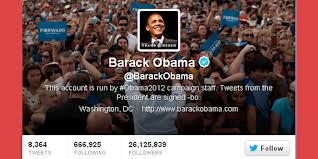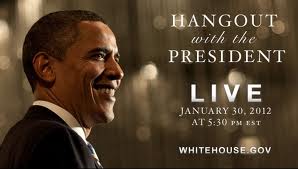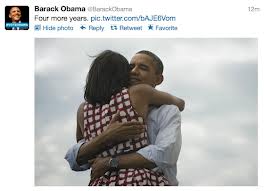Obamas Social Media Campaigns: Comparison between 2008 and 2012
Obamas Social Media Campaigns
Obama in his 2008 electoral campaign was commended for his masterly utilisation of social media sites such as Twitter, Facebook and Myspace. He even going as far as setting up his very own social media site in the form of: My.BarrackObama.com. What was most remarkable about Obamas social media campaigns was his teams’ utilisation of the websites and how effective this usage was on the impact of the election.
The founder of The Huffington Post, Ariana Huffington, went so far as to say: “Were it not for the internet, Obama would not have been a candidate.” With the gift of hindsight, this may seem to be an understatement of Obamas social media campaigns potential. However it is important to note the astronomical level of national inclusion and participation the 2008 campaign accomplished. A level which was previously unprecedented. A sentiment he reflected in his 2008 victory speech: “It’s the answer told by lines that stretched around schools and churches in numbers this nation has never seen. By people who waited three hours and four hours. Many for the very first time in their lives because they believed that this time must be different; that their voice could be that difference.”
The word merchants and political soothsayers of the media world heralded the 2008 election as: “the Facebook election.” In 2008 the shoe certainly fit. This was however when social media’s explosive capabilities were arguably in their infancy. In an interview with the online blog site Mashable, Sam Graham- Felson, (Head blogger for team Obama 2008) said speaking before the 2012 election: “While Facebook was still very much important in 2008, Obama had 2 million Facebook friends, and now it’s 28 million.” Continuing to mention how social media was in some ways shaping the second presidential campaign: “a lot of what the campaign’s done is to try to come up with the content that will fly on social media, like animated GIFs and Lolcatz-style images.”
In the lead up to the 2012 election many people were asking whether Obamas social media campaigns on the different sites would be able to follow up the prior election. The statistics however speak for themselves and are as follows:
Obamas Social Media Campaigns – The Comparison
Obamas Social Media Campaigns – 2008 Electoral Campaign
During this presidential campaign, Obama dominated. It was not merely that he had more friends and followers on various social media sites and platforms, than his rival, the republican John McCain. The main reason was that Obama’s team were far more committed and outgoing in their approach. Obama’s team saw social media as a genuine means to access and engage potential voters. To demonstrate:
- Youtube: During his electoral campaign Obama streamed an astounding total of 14.5 video hours of official footage. This level of streaming would cost a national television station a staggering $47 million.
- Myspace: Obama had 400% more friends than McCain, although not as many as Tom of course. In numerical terms this was 844, 227 friends to Obama and 219, 404 friends to McCain.
- Twitter: Although the Myspace gulf was large; the Twitter divide was astronomical. After joining Twitter in March of 2007, by the election of 2008 Obama was one of the most popular members of the site. Obama gathered himself a total of 118,000 followers to McCain’s meagre 4942. In today’s terms this is a sparse number of followers; however it must be remembered at this time Twitter was a fledgling platform.
- My.BarrackObama.com: Obama even went as far as to create his own social media site for the campaign. It provided the first online format for voters to directly interact with the campaign online.
Obamas Social Media Campaigns – 2012 Electoral Campaign
During the 2012 campaign the focus was still on turning online attention into offline commitment in the form of votes. Keeping the same team as the previous election and with the bloom in the variety and scope of social media sites between the two elections. It is little surprise that the social media campaign was far more extensive the second time around:
- Google+ Hangout: He utilised the Google’s six month year old format. Obama made use of the video interactive chat component of the format.
- Text Message Donations: this was the first American Presidential campaign to allow voters to donate to the cause. Amounts of up to $50, directly by text. All the voters had to do was to simply text GIVE and their chosen amount to 62262.
- Instagram: Quick to join the most rapidly expanding social media platform, on January 4th 2012. This was the format used to share behind the scenes pictures of the campaign and stops on the presidential circuit.
- Dashboard: Arguably the developed version of the previous elections brainchild: My.BarrackObama.com, released May 2012 and operating on a similar format to its predecessor.
- Foursquare: Obama officially joined the site before the campaign launched. It was used as a format for sharing of the various campaign stops with Obama’s legion of supporters.
- Mobile App: Obama and his team of techno savants created an app. The tool allowed voters to donate money directly to the cause. The app also education potential voters on the procedures within their locality, whilst informing and allowing them to sign up for campaign events.
- Facebook, Linkedln and Twitter Town Halls: With the typical level of technical ingenuity expected from the Obama outfit, digital “town hall” meetings were held. Questions were taken from users of the various sites. Admittedly the meetings were held before the season’s official kick off, Facebook: April 2011, Twitter: July 2011, LinkedIn: October 2011. However this format demonstrated the online tour de force to be expected in the campaign.
- Pinterest: It was not only Barrack who was involved in the campaign, but also his and Americas First Lady Michelle Obama. She had a Pinterest account, which she used occasionally, signing off each post: M.O.
It is hard to compare the two of Obamas social media campaigns in purely tangible terms. They occurred over two very different backdrops. The 2008 election bore witness to Obama social media innovator. However by the subsequent election the merits of social media and their utilisation in the political sphere had been established. From a purely tangible comparison, the 2012 campaign far exceeded the 2008 campaign both in terms of embracing and harnessing the potential of social media utilising it to good effect. Making use of everything from Pinterest to Instagram.



